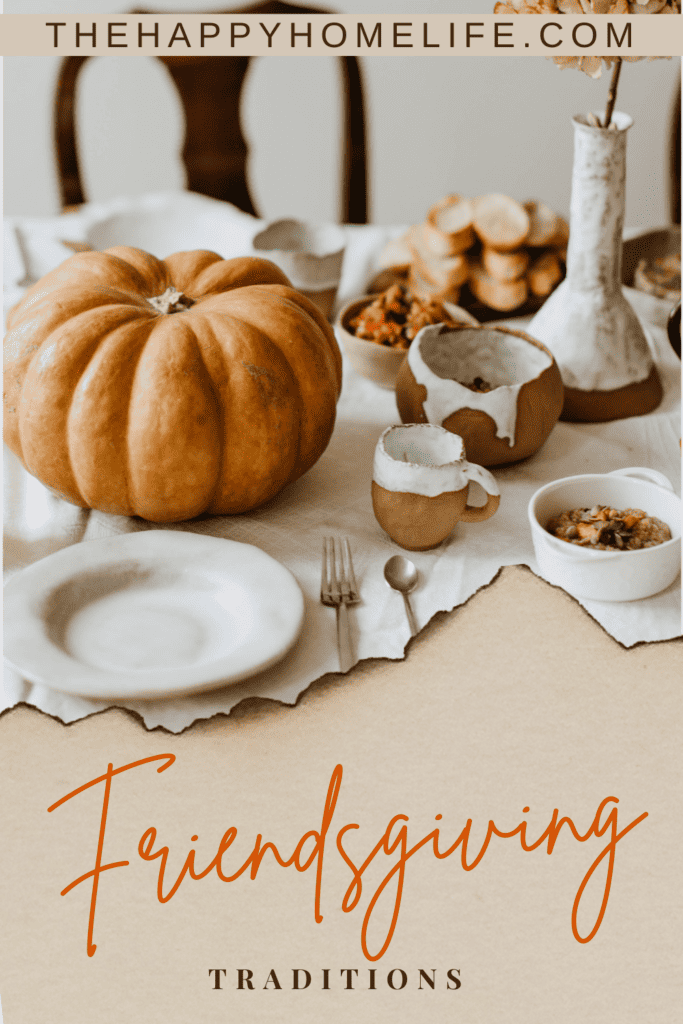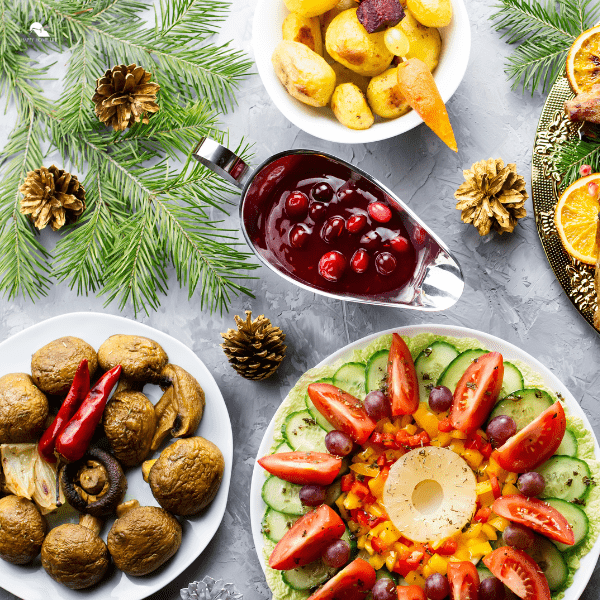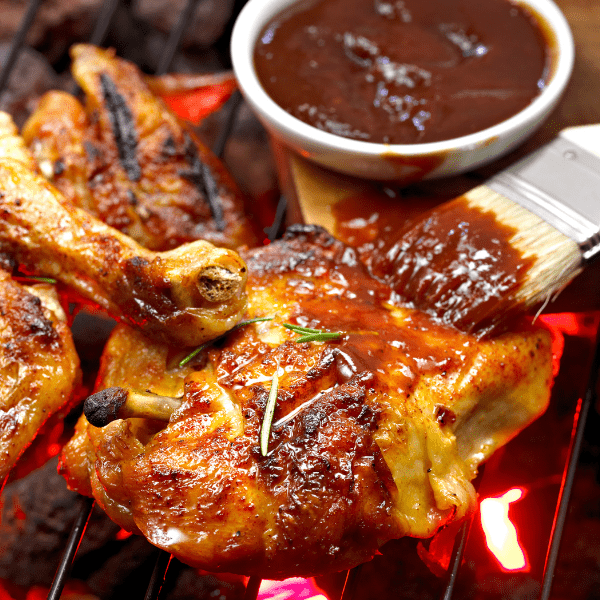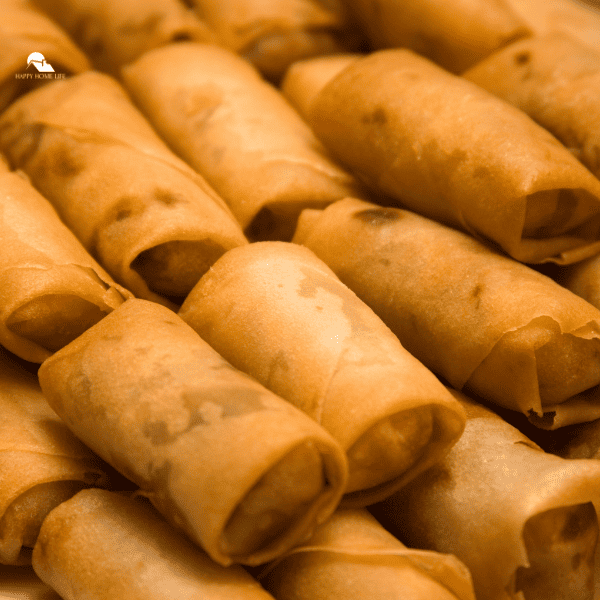The tradition of Friendsgiving is a modern tradition that has gained popularity in recent years. It is a unique celebration that brings together friends to share a Thanksgiving-inspired meal, usually held on a day close to the official Thanksgiving holiday. While Thanksgiving is traditionally celebrated with family, it offers an opportunity for friends to come together and create their own traditions.
The tradition of Friendsgiving originated as a way for people who couldn’t be with their families on Thanksgiving to still enjoy a festive meal and companionship. It has since evolved into a cherished gathering among friends where they can express gratitude and strengthen their bonds. Friendsgiving often includes a potluck-style meal where each guest contributes a dish, creating a diverse and delicious spread.
One of the reasons Friendsgiving has become so popular is its flexibility. Unlike Thanksgiving, there are no strict rules or expectations for Friendsgiving, allowing hosts and guests to personalize the celebration. Activities such as sharing stories, playing games, or watching movies can be incorporated into the event, making it a memorable and enjoyable experience for everyone involved.
In our busy lives, Friendsgiving serves as a reminder to cherish and appreciate the friendships we have. It allows us to create new traditions and forge deeper connections with our chosen family.
So, gather your friends, prepare a feast, and celebrate the spirit of togetherness that Friendsgiving embodies.
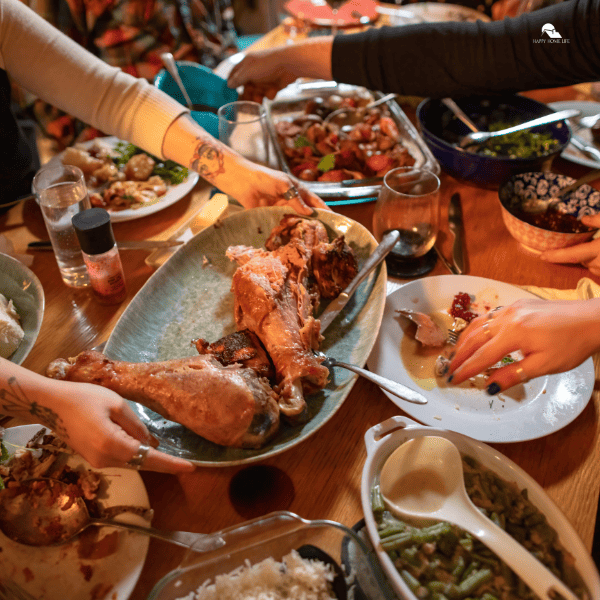
What are the rules of Friendsgiving?
When it comes to Friendsgiving, people follow various “rules” or guidelines to ensure a successful and enjoyable gathering.
Here are some common principles often associated with Friendsgiving:
Potluck Style
Friendsgiving is typically a potluck-style event where each guest contributes a dish. This helps distribute the workload and ensures a diverse spread of food.
Host Responsibilities
The host usually takes on the responsibility of cooking the turkey, which is considered the centerpiece of the meal. They may also coordinate the potluck, delegate tasks, and provide the essentials like gravy and drinks.
Planning in Advance
It’s important to plan Friendsgiving well in advance to ensure proper coordination and avoid last-minute stress. Setting a date, creating a guest list, and assigning dishes early on can help everyone prepare accordingly.
Assigning Tasks
Divvying out assignments is another common practice. Guests can be assigned specific dishes or tasks, such as setting the table, decorating the space, or bringing utensils and servingware.
Flexibility
Unlike traditional Thanksgiving, Friendsgiving is often more relaxed and informal. There are no strict rules to adhere to, allowing hosts and guests to personalize the celebration based on their preferences and dietary restrictions.
Non-Traditional Meals
Friendsgiving provides an opportunity to experiment with non-traditional dishes and flavors. Guests are encouraged to get creative and bring unique or culturally diverse dishes to share.
Communication
Clear communication among guests is crucial. Sharing information about allergies, dietary restrictions, and food preferences ensures that everyone can enjoy the meal without any discomfort.
Festive Atmosphere
Decorating the space, playing music, and incorporating fun activities or games add to the festive ambiance of Friendsgiving. Creating a warm and welcoming environment for everyone to enjoy is essential.
Gratitude and Sharing
Friendsgiving is a time to express gratitude for the relationships and friendships in our lives. It’s an opportunity to share stories, memories, and moments of appreciation with one another.
Cleanup and Graciousness
Lastly, it’s important to show appreciation to the host by offering to help with cleanup after the meal. Guests can help with washing dishes, tidying up the space, and expressing gratitude for the hospitality.
What time should Friendsgiving start?
Generally, Friendsgiving gatherings tend to be more relaxed and flexible compared to traditional Thanksgiving dinners. It is common for Friendsgiving to start in the early afternoon, around 2 or 3 PM. This allows guests to have a leisurely morning and gives the host enough time to prepare the main dishes while allowing guests to contribute their potluck dishes.
Starting in the afternoon also provides ample time for socializing, enjoying the meal, and engaging in fun activities or games throughout the evening. Ultimately, the start time should be chosen to accommodate the availability and preferences of the host and guests.
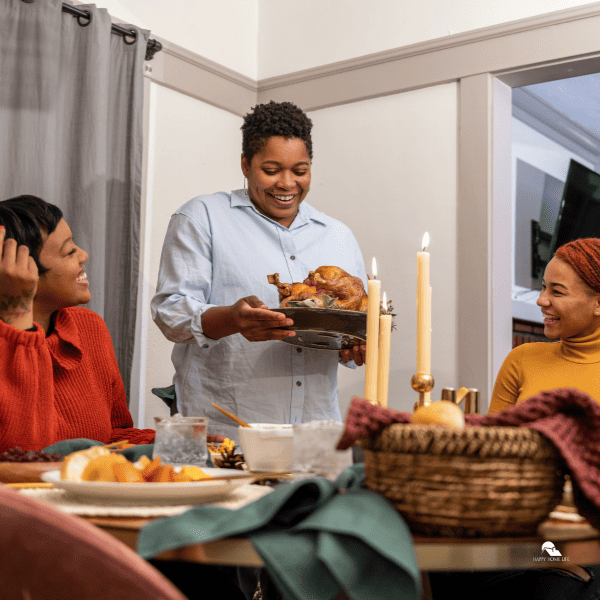
What do you bring to a Friendsgiving lunch?
When attending a Friendsgiving lunch, it’s customary to bring a dish to share with the group. Here are some ideas for what you can bring to contribute to the meal:
Classic Turkey
If the host hasn’t already taken care of the main turkey, you could offer to bring a roasted turkey or smoked turkey as the centerpiece of the meal. Make sure to coordinate with the host in advance to avoid duplication.
Side Dish Delights
Side dishes are always a hit at Friendsgiving. Consider bringing traditional favorites like creamy mashed potatoes, sweet potato casserole with marshmallows, green bean casserole, or cranberry sauce. These dishes complement the main course and add variety to the table.
Creative Salads
A fresh and vibrant salad can provide a refreshing balance to the heavier Thanksgiving fare. Consider preparing a seasonal salad with mixed greens, roasted vegetables, nuts, dried fruits, and a flavorful vinaigrette dressing.
Finger Food and Appetizers
Bring along some appetizers or finger foods that guests can enjoy while mingling. Options can include cheese and charcuterie boards, stuffed mushrooms, mini quiches, or savory bite-sized sliders.
Breads and Rolls
Freshly baked bread or homemade rolls are always a welcome addition to any meal. Consider bringing fluffy dinner rolls, crusty bread, or even flavored bread like rosemary or garlic Parmesan.
Delicious Desserts
Friendsgiving wouldn’t be complete without a delectable dessert spread. Offer to bring a crowd-pleaser like pumpkin pie, apple crisp, pecan pie, or a festive dessert like cranberry-orange bread pudding.
Beverage Contributions
Don’t forget to bring some beverages to accompany the meal. You could bring a bottle of wine, a festive cocktail, non-alcoholic options like sparkling cider or homemade infused water, or even a selection of craft beers.
Dietary Accommodations
It’s thoughtful to consider dietary restrictions when choosing your dish. If you know someone who has specific dietary needs, bring a dish that accommodates those requirements. This could include vegan or vegetarian options, gluten-free dishes, or allergen-free alternatives.
The tradition of friendsgiving has become a cherished tradition that brings friends together to celebrate gratitude, friendship, and delicious food. It offers a chance to create new memories and strengthen the bond among chosen family members. The relaxed and informal nature of Friendsgiving encourages creativity and experimentation with non-traditional flavors, reflecting the evolving nature of our modern friendships.
Whether it’s through assigning tasks, planning in advance, or simply enjoying each other’s company, the essence of Friendsgiving lies in fostering a sense of camaraderie and appreciation. As this tradition continues to grow, it reminds us of the importance of cultivating meaningful connections and expressing gratitude for the loved ones who enrich our lives.
